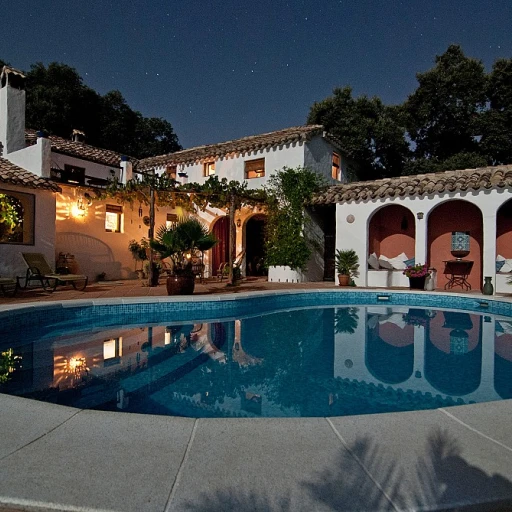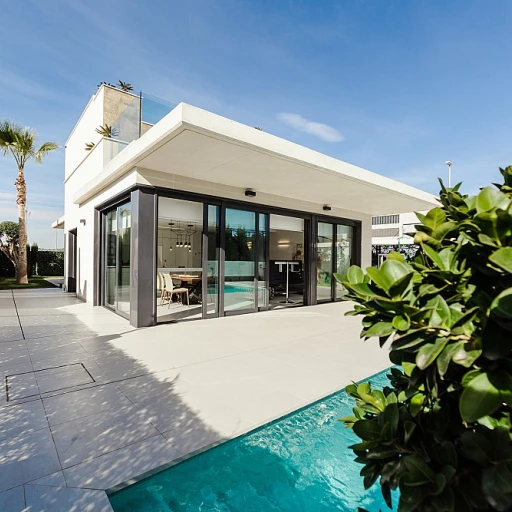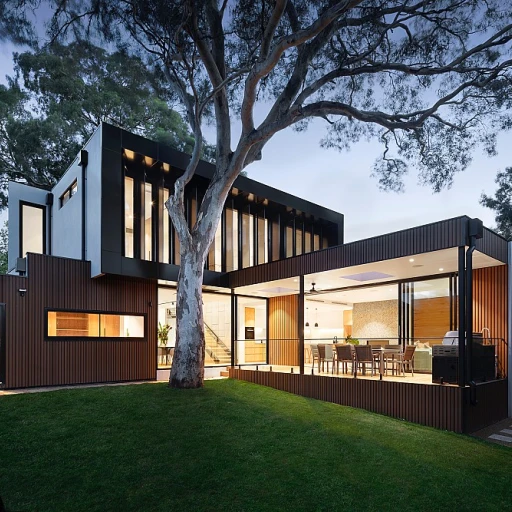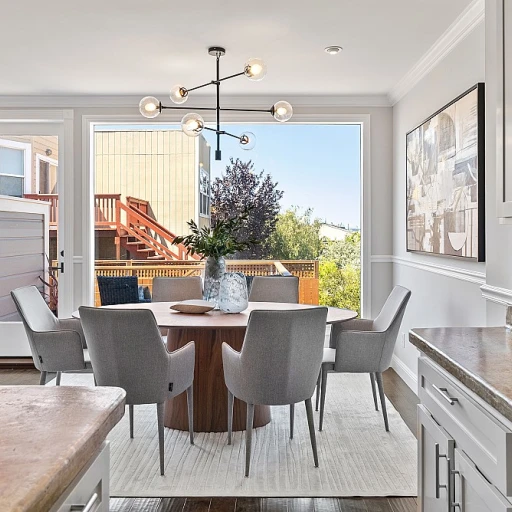Nature Meets Luxury: Understanding Biophilic Design
Embracing the Natural Element in Exclusive Estates
In the pursuit of opulence, modern estate owners are turning towards a concept that roots back to the very essence of wellness and luxury: biophilic design. This increasingly popular approach integrates elements of nature into the architectural blueprints and interior designs, aiming to forge a harmonious relationship between the natural environment and human habitats. Research by Terrapin Bright Green indicates that spaces featuring biophilic design can increase the perceived value of a property by up to 15%. Merging the aesthetics of lush greenery and natural light with cutting-edge architecture is not merely a trend; it's a well-crafted strategy to elevate the allure and marketability of an estate.
Enhancing Investment Attractiveness Through Verdant Environments
Tapping into the lushness of green spaces doesn't just end with aesthetic enhancement—it's an investment savvy move. Discerning property investors and high-net-worth individuals look for estates that offer more than just luxury; they seek environments that positively impact their wellbeing. A study by Nielsen reports that 81% of global respondents feel strongly that companies should help improve the environment. This sentiment cascades into the realm of real estate investments where sustainability and green living are becoming non-negotiable for eco-conscious buyers. These are not only preferences but also strategic drivers for real estate value appreciation.
Real Estate and the Green Premium: Evidence from the Market
The tangible benefits of integrating biophilic elements into exclusive real estate isn't just anecdotal; they are underscored by robust case studies that exhibit impressive outcomes. From a financial viewpoint, properties lauded for their biophilic elements often command a 'green premium'. Exclusive estates around the globe are harnessing this trend, not only to differentiate themselves but also to command higher market values. The numbers speak for themselves, with some luxury developments seeing up to a 20% premium on sales prices due to their prolific use of biophilic design principles.
Green Is the New Gold: Crafting Eco-Elegance in Estate Offerings
As the surge of eco-consciousness invades the real estate market, estate owners are presented with the golden opportunity to infuse sustainable luxury into their properties. The attraction to sustainable features—ranging from renewable energy sources to non-toxic materials—is reshaping what it means to live in luxury. Real estate with a lower environmental footprint not only resonates with the values of today's buyers but also promises reduced long-term operational costs, adding yet another layer to the investment's allure. The equation is simple; sustainability equates to desirability, desirability equates to demand, and demand equates to value.
Boosting Investment Potential with Green Spaces
Discovering the Intersection of Opulence and the Natural World
The essence of biophilic design lies in its innate ability to merge the opulence of luxury estates with the tranquility and vitality of the natural world. This innovative approach is more than just an aesthetic choice; it's about creating living spaces that directly engage the human psyche, nurturing a profound connection between residents and their environmental surroundings. According to a report by Terrapin Bright Green, environments with natural elements can increase well-being by as much as 15%. This is a significant statistic for exclusive estate owners looking to enhance the value and appeal of their properties.
The Allure of Natural Elements in Sophisticated Living Spaces
Integrating natural elements into upscale homes is not merely a design trend; it's a response to the growing body of research that highlights the benefits of nature on human health and productivity. Large windows that offer sweeping views of lush landscapes, indoor water features, and the use of natural materials like stone and wood can significantly uplift a property's market value. A study by Global Wellness Institute suggests that homes designed with nature in mind can command up to a 10-25% premium over traditional luxury properties.
Maximizing Estates' Value Through Biophilic Elements
As an exclusive estate owner, strategically incorporating biophilic design elements can lead to increased property valuation. The seamless integration of outdoor and indoor living spaces, for instance, not only enhances aesthetic appeal but also increases square footage value. A study from the University of Oregon found that visual exposure to settings with natural elements can reduce stress levels by up to 60%. Consequently, estates that prioritize well-being through these design principles can present a compelling selling point to high-net-worth individuals seeking sanctuary and luxury.
The Statistical Edge of Biophilic Design in Property Enhancement
Key performance indicators in the real estate market, such as time-on-market and final sale price, are testament to the value added by biophilic design. Properties boasting elements that enhance residents' connection to nature tend to sell faster and at higher prices. For example, Knight Frank's Wealth Report indicates that properties with extensive green features are increasingly sought after by the affluent, often acting as a differentiator in competitive markets. By assimilating biophilic features, estate owners can not only cater to the eco-conscious buyer but also elevate the overall desirability of their property portfolio.
Case Studies of Biophilic Design in High-End Real Estate
Green Spaces Elevate Property Desirability
As a premium estate owner or a curator of high-value properties, understanding how to magnify your investment's allure is crucial. Biophilic design has been the cornerstone of increasing estate value and attracting a niche market of affluent buyers. A compelling statistic from the Global Wellness Institute reveals that real estate developments with wellness elements, such as biophilic components, can command price premiums of 10 to 25 percent. Meticulously curated green spaces not only provide aesthetic pleasure but are a significant selling point that indicates a high return on investment.
Exclusive Estates: More Than Just Aesthetics
Biophilic-focused exclusive estates are more than a luxury—they're a lifestyle. Prospective buyers and investors are increasingly looking for properties that offer health benefits and a connection to nature. Integrating natural elements such as living walls, indoor gardens, and rooftop terraces can reduce stress and enhance cognitive function, as noted by the Journal of Environmental Psychology. These sustainable features not only serve environmental purposes but are a strategic focal point in marketing to eco-conscious buyers. Such integrations serve as tangible proof of the estate's commitment to sustainability, immensely appealing in the luxury market.
Enhancing ROI with Biophilic Elements
In the high-end real estate market, unique features that combine luxury with sustainability are not just trends but investments that can lead to substantial returns on investment (ROI). Estates that showcase biophilic designs are often seen as pioneering the movement towards eco-luxury living. A study by Nielsen pointed out that 73% of global consumers would change their consumption habits to reduce their environmental impact. Thus, by incorporating biophilic elements, estates can position themselves at the forefront of a growing demographic seeking luxury with a conscience.
Real Estate's Green Wave: Financial and Well-being Gains
The luxury real estate market is undergoing a 'green wave'—a movement toward integrating nature into living spaces for enhanced well-being and financial gains. For instance, properties that boast energy-efficient systems and use sustainable materials could lead to energy cost savings, a significant advantage that resonates with buyers' economic sensibilities. In 2020, the World Green Building Trends reported that 47% of respondents are heavily involved in green projects and that sustainable buildings are expected to see a 60% growth in demand. This data reflects a distinct shift toward environments that promise both personal and environmental health, suggesting that estates with these features can command higher prices and quicker sales.
Incorporating Sustainable Features to Attract Eco-Conscious Buyers
Exclusive Estates Embracing the Great Outdoors
In the realm of high-end real estate, the integration of biophilic design can dramatically enhance the allure and value of a property. Statistics from various market analyses indicate that properties with well-integrated natural elements can see a premium of up to 15-20% in market value. For example, the acclaimed 1 Hotel & Homes in South Beach, Miami, which is suffused with native greenery, reclaimed woods, and panoramic ocean views, stands as a testament to the luxury market's demand for nature-centric designs. This upscale estate seamlessly blends indoor comfort with outdoor vibrancy, creating a sanctuary that is both luxurious and environmentally attuned.
Revolutionizing Spaces with Vertical Gardens and Natural Light
Vertical gardens are not just aesthetically pleasing; they represent a fusion of art and sustainability that speaks volumes to eco-conscious buyers. The Bosco Verticale in Milan, Italy, features twin residential towers adorned with over 900 trees and more than 2,000 plants, serving as a living, breathing example of biophilic design at its finest. In addition to reducing energy consumption through natural insulation, such green facades have been shown to increase rental rates by approximately 5%, according to market studies. The towers highlight how estates can harness natural light and greenery to create an inviting and restorative environment.
A Tale of Two Designs: The Waterfront Retreat and the Urban Eden
Drawing upon two distinct narratives, the story of the Waterfront Retreat contrasts sharply with that of the Urban Eden, yet both exemplify the transformative power of biophilic design in exclusive real estate. On one hand, we have a serene, private estate overlooking a tranquil lake, where expansive windows and an open terrace create a gentle dialogue between the interior and the waterside, enhancing the psychological well-being of its inhabitants. On the other, in the heart of a bustling cityscape, a luxury condominium weaves nature into its very infrastructure, with rooftop gardens, outdoor yoga studios, and interior courtyards. These spaces invite residents to find repose amidst the urban jungle, leading to a unique living experience that commands a higher market value, with urban green spaces potentially upping rental prices by 3-7%, as per leading real estate analysts.
Conclusion: The Financial and Emotional Return on Natural Investments
To the discerning estate owner, the evidence is clear: investing in biophilic design is not merely a nod to sustainability; it is a strategic financial decision. Beyond the impressive statistics like reduced vacancy rates of 4% for buildings with superior environmental certifications, or the heightened productivity reported in workplaces with natural elements, lies the intangible value of wellbeing and connection to the environment. As current trends lean towards sustainability and wellness, estates that adopt biophilic principles not only stand out in an increasingly competitive market but also provide a sanctuary where luxury and nature coexist harmoniously. It's an investment that pays dividends both financial and emotional, engendering a legacy of both profitability and tranquility.
-large-full.webp)

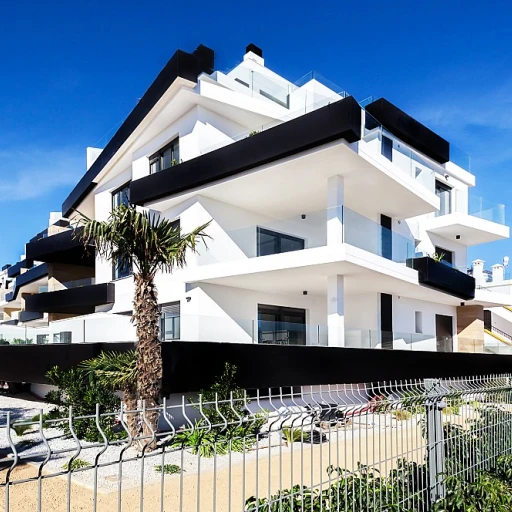
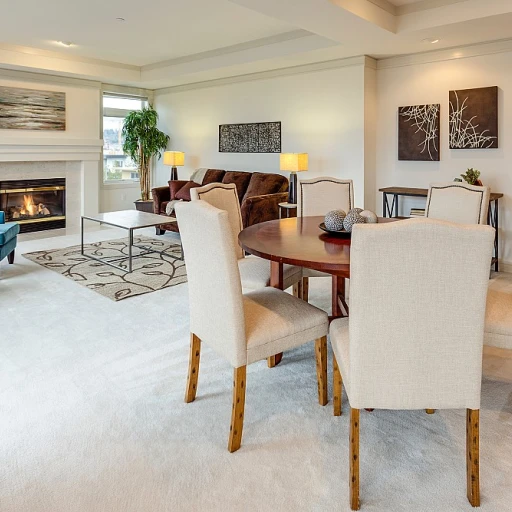
-large-teaser.webp)

